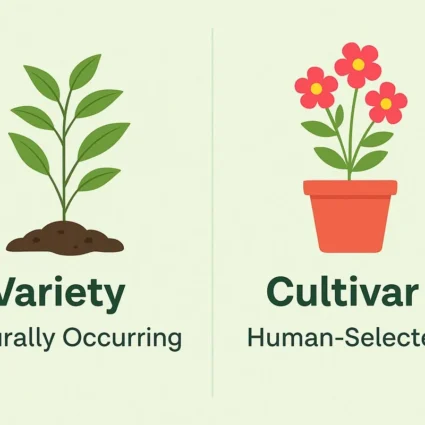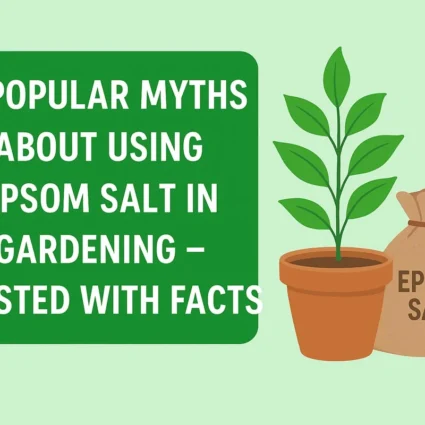
How to Choose the Perfect Plants for Your Garden’s Climate
Gardening is a beautiful hobby that allows you to connect with nature, beautify your surroundings, and grow fruits and vegetables. However, choosing the right plants for your garden’s climate is crucial for success. Each plant has different environmental requirements, and planting something that can’t handle the weather conditions of your area can result in disappointment and wasted time and money.
Gardening in India can be an enriching experience with its diverse flora and fauna. However, choosing the right plants for your garden’s climate is crucial for success. Each plant has different environmental requirements, and planting something that can’t handle the weather conditions of your area can result in disappointment and wasted time and money. In this blog, we will explore how to choose the perfect plants for your garden’s climate in India.
Also Read This :Top 20 Low-Maintenance Hanging Plants for Your Home
Here are some tips to help you choose the perfect plants for your garden’s climate:
- Know your climate
- Consider your microclimate
- Choose plants native to your region
- Research the plant’s growing requirements
- Consider your preferences
Also Read This :Top Ornamental Flower Plants for Every Season
Know your climate
India has a diverse range of climates, from the tropical heat of the south to the cool mountainous regions of the north. Therefore, it’s essential to understand the environment of your area before selecting plants for your garden. Generally, India can be divided into six major climate zones:
Tropical and subtropical regions
These regions experience hot and humid weather, with temperatures ranging from 20-38°C. These areas are well-suited for tropical plants like mango, papaya, banana, and coconut.
Semi-arid regions
These regions have hot and dry summers and mild winters, with temperatures ranging from 25-35°C. Succulents like cacti, agave, and aloe vera do well in these areas.
Arid regions
These regions are characterized by sweltering and dry conditions, with temperatures ranging from 35-50°C. Desert plants like cacti and succulents are the best choice for these areas.
Also Read This :Greening Your Home: The Benefits of Indoor Plants
Mediterranean regions
These regions have hot, dry summers and cool, wet winters, with temperatures ranging from 10-30°C. Plants like olives, figs, and grapes thrive in these conditions.
Alpine regions
These regions have cool summers and cold winters, with temperatures ranging from 0-20°C. High-altitude plants like rhododendrons, azaleas, and ferns are the best choice for these areas.
Coastal regions
These regions have a humid and hot climate, with temperatures ranging from 25-35°C. Plants like coconut, banana, and palm trees thrive in these conditions.
Also Read This :Unleashing the Magic of Ornamental Plants in Your Home
Consider your microclimate
Even within the same climate zone, microclimates can affect your garden’s growing conditions. For example, a spot that gets full sun all day will have different temperature and moisture conditions than a spot shaded by trees. So take note of any microclimates in your garden and choose appropriate plants for those conditions.
Choose plants native to your region.
Native plants are well-adapted to your region’s climate and soil conditions, making them an excellent choice for a low-maintenance and environmentally-friendly garden. They’re also an important food source and habitat for local wildlife. Consider incorporating some native plants into your garden to support your local ecosystem. Some popular native plants in India include:
Neem
This tree is native to India and is known for its medicinal properties.
Tulsi
Also known as holy basil, this plant is widely grown for its medicinal and spiritual significance.
Mango
The national fruit of India, mango trees are native to India and grow well in tropical and subtropical regions.
Also Read This :Navratri Flowers: Symbolism and Importance
Peepal
Also known as the sacred fig, this tree is revered in Hinduism and is believed to have medicinal properties.
Banyan
This tree is considered sacred in Hinduism and is known for its aerial roots.
Also Read This :The Effects of Summer Heat on different Types of Plants
Research the plant’s growing requirements.
Before buying a plant, research its growing requirements to ensure it’s a good fit for your garden. Some critical factors to consider include the following:
Sun exposure
Some plants need full sun to thrive, while others prefer partial or complete shade.
Soil type
Different plants have different soil preferences. Ensure the soil in your garden is appropriate for the plants you want to grow.
Also Read This :The Ultimate Guide to Perlite: Everything You Need to Know
Water requirements
Some plants are drought-tolerant, while others need regular watering.
Temperature range
Some plants are sensitive to extreme temperatures and won’t do well in areas with hot summers or cold winters.
Growing season
Make sure the plant’s growing season matches your climate. Some plants may need to be started indoors or in a greenhouse before being transplanted outside.
Also Read This :A Plant-Based Diet for Better Health: Why It’s Worth a Try
Consider your preferences.
Finally, consider your preferences when choosing plants for your garden. Do you want to grow colourful flowers, tasty vegetables, or fragrant herbs? Do you prefer low-maintenance plants or ones that require more attention? Make sure the plants you choose are ones you’ll enjoy tending to and watching grow.
In India, some plants that can do well in different climates include:
In tropical and subtropical zones: mango, guava, banana, papaya, turmeric, and ginger.
In temperate zones: apple, apricot, cherry, peach, and plum.
In alpine zones: rhododendron, primrose, and alpine poppy.
Also Read This :Green Thumbs Up: Tips for Properly Watering Your Indoor Plants




